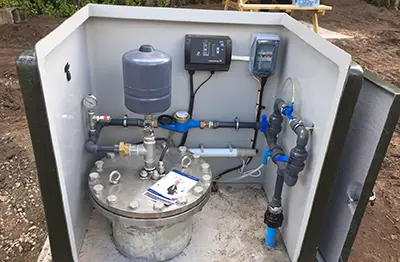

Flowmeter Logging
Flowmeter logging is a downhole technique used to measure the direction and velocity of water movement within a borehole.
about
Static & Dynamic Flowmeter Logging
Flowmeter logging is one of the most reliable methods for identifying active groundwater inflow and outflow zones, even in complex or multi-layered formations.
At Igne, we use both static and dynamic flowmeter logging methods to help our clients understand the performance of their boreholes and the hydrogeological behaviour of the surrounding formations.
Whether you’re designing a new well, troubleshooting a failing one, or modelling aquifer behaviour, flowmeter data provides critical clarity.

The uses
What Does Flowmeter Logging Measure?
Flowmeter tools measure the vertical movement of water in the borehole, typically in terms of direction and velocity. This information helps to:
- Identify zones of groundwater entry (inflow) or exit (outflow)
- Pinpoint productive horizons for pump placement
- Assess hydraulic connectivity between formations
- Evaluate leakage between aquifers
- Verify sealing or grouting in constructed wells
- Support aquifer performance analysis and yield prediction
The difference
Static vs Dynamic Flow Logging
- Static logging: carried out in ambient (non-pumped) conditions to detect natural vertical flow
- Dynamic logging: performed while pumping or injecting water to show how the borehole responds to abstraction or recharge
Both methods provide detailed vertical profiles of how water behaves at different depths, allowing for targeted decision-making.
The applications
Applications Across the Board
Flowmeter logging is widely used in:
- Water well design and optimisation
- Geothermal borehole performance assessment
- Hydrogeological investigations
- Groundwater remediation and tracer testing
- Borehole troubleshooting (e.g. declining yield)
- Verification of sealing in grouted boreholes
- Groundwater abstraction licencing support
The process
How It Works
The flowmeter tool is lowered into the borehole and records flow at set intervals, often using a spinner or electromagnetic sensor. The logging process can be done under natural conditions or during pumping tests.
Static logging is completed by running the probe 6 times at different speeds and directions. 9, 12 and 15 meters per minute, with an up and down log at each speed.
Results are plotted to show both direction (upward or downward flow) and relative velocity at each depth.
Combining flowmeter data with other logs such as temperature, conductivity or gamma can reveal a detailed hydrogeological picture.
FAQ
Frequently Asked Questions about Flowmeter Logging
- What type of boreholes can be flow-logged?
Open boreholes or uncased sections are ideal, but PVC-cased boreholes can also be logged if screen sections are present. Metal casing can interfere with some tool types.
- Do I need to pump the borehole for flow logging?
Not always; static flowmeter logging can reveal natural vertical flow, while dynamic flow logging requires pumping to assess response during abstraction.
- Can flowmeter data help improve well yield?
Yes; by identifying the most productive zones, screens or pumps can be optimally placed, reducing energy use and improving water quality.
- What kind of tool is used?
We typically use impeller (spinner) or electromagnetic flowmeters, depending on borehole conditions and required sensitivity. Both are high-accuracy and field-proven.
- How deep can you perform flowmeter logging?
Flow logging is possible to several hundred metres, depending on borehole access, diameter and water conditions. Depth limitations will be reviewed at the planning stage.
The next step
Know Where Your Water’s Coming From — and Where It’s Going!
Flowmeter logging gives you a true picture of groundwater movement, so you can plan, protect and manage your water resources with confidence.
Get in touch with us today to arrange a borehole flow survey and let our data drive your decisions.


Temperature & Conductivity Logging

Flowmeter Logging

Caliper Measurement Logging

Dual Focused Resistivity Logging

